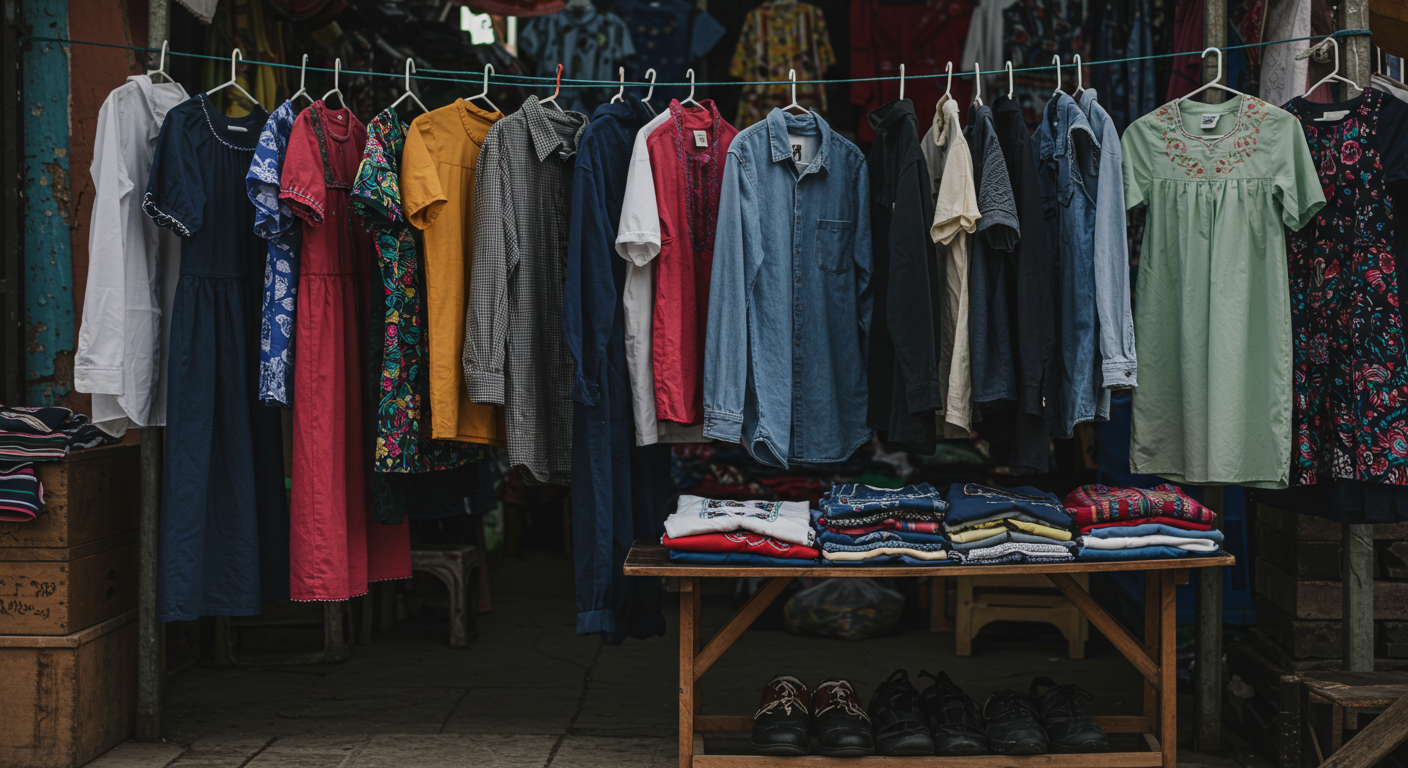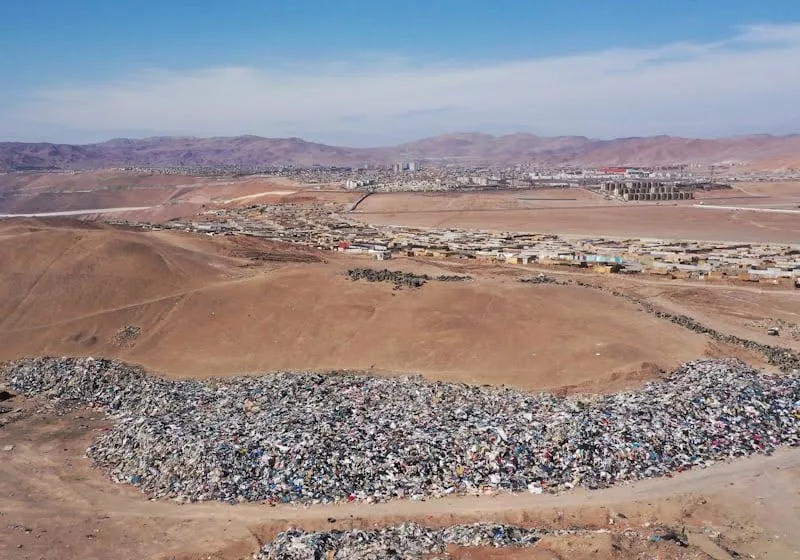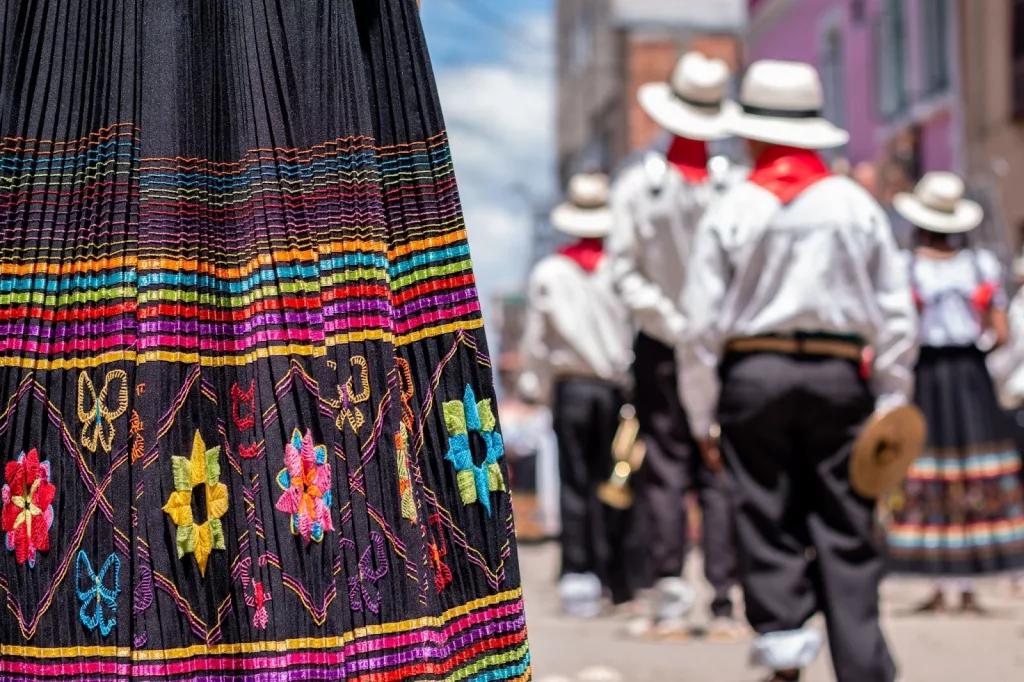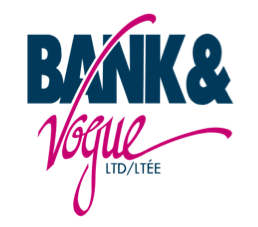Latin America has emerged as a standout player in the global secondhand clothing trade, with countries like Chile, Guatemala, Mexico, Nicaragua, Honduras, and El Salvador serving as major import hubs for what the industry terms “credential clothing.”
This analysis of the state of credential clothing in this region examines the current market state, its economic impacts, environmental challenges, and the complex regulatory landscape shaping its future.


Understanding Credential Clothing in Latin American Markets
Credential clothing represents a specific category within the broader secondhand clothing market, characterized by it being of a higher quality than other second-hand goods, due to it being untouched donations that are many times left in their original packing and have not been sorted, graded, and weathered to the same degree as other second-hand clothes.
Unlike informal or unregulated secondhand imports, credential clothing follows established trade routes and requires proper documentation and customs procedures. The term “credential” in this context refers to the documented, traceable nature of these imports, distinguishing them from undocumented or informal textile waste.
Latin America, with its growing urban populations, rising environmental consciousness, and evolving retail ecosystems, is emerging as a key region in the future of the used clothing trade. Of course, different regions have different processes and regulations when it comes to these kinds of imports.
In many Latin American markets, credential clothing is locally known by various names. In Chile, it’s called “ropa americana,” directly referencing its primary origins from the United States. This nomenclature reflects both the geographic source and the cultural perception of these imports as representing American fashion trends and styles and it’s prominence in other markets. This also leads to the homogenization of style, as major exporters influence and shape the second-hand trends in importing regions.
Key Importing Nations and Economic Impact
Chile
In 2021, Chile was the world’s fourth largest importer of second-hand and unsold clothes, and the first in Latin America. Imports reached some 126,000 million tons, originating principally from China, the United States and the Republic of Korea. This staggering figure positions Chile as the undisputed leader in the regional credential clothing market.
About 40% of these clothes are imported through the Iquique free trade zone (also known as The Zona Franca de Iquique (SOFRI)) in the northern Atacama Desert, establishing this region as a crucial logistics hub for the entire Latin American secondhand clothing distribution network.
Guatemala
The economic impact is not only for the people of Guatemala, but also for the governments as they receive tax revenues generated by the secondhand clothes. Guatemala has positioned itself as a significant player in the Central American credential clothing market, with established distribution networks serving both domestic and regional markets.
Mexico
Mexico presents a more complex regulatory environment for credential clothing imports. To be eligible to import more than 400 different items (including agricultural products, textiles, chemicals, electronics, and auto parts), Mexican importers must apply to the SHCP to be listed in these sector registries. This regulatory framework creates both opportunities and challenges for credential clothing importers.
Driving Forces Behind Demand
Several factors contribute to the growing demand for credential clothing across Latin America:
Economic Accessibility
The primary driver remains economic necessity. With clothing inflation rate in Argentina has skyrocketed in 2024, consumers increasingly turn to secondhand options as affordable alternatives to new clothing.
Cultural Shift and Fashion Democratization
Contrary to the global apparel market, international fast fashion companies, such as Shein, Zara, and Primark are not the market leaders in Latin America, where local apparel companies seem to dominate. This creates space for credential clothing to fill market gaps, offering international fashion trends at accessible price points.
Changing Consumer Perceptions
The stigma associated with secondhand clothing has significantly diminished over the past decade. Young consumers, particularly in urban areas, now view credential clothing as a sustainable and fashionable choice rather than a necessity driven by poverty.
Sourcing and Supply Chain Dynamics
The credential clothing supply chain in Latin America primarily originates from three main regions:
United States
Research suggests promoting second-hand clothing sector is key to maximising clothing reuse in the US, despite a predicted decline. The U.S. remains the largest single source of credential clothing exports to Latin America.
Asian Markets
Imports reached some 126,000 million tons, originating principally from China, the United States and the Republic of Korea. China and South Korea have emerged as significant suppliers, often serving as consolidation and processing centers for global textile waste.
European Sources
While less dominant than U.S. and Asian sources, European countries contribute to the credential clothing supply chain, particularly through specialized textile recycling and sorting operations.
Regulatory and Logistical Challenges
Customs and Tariff Barriers
The regulatory landscape varies significantly across Latin American countries. Under CAFTA-DR, a certificate of origin is not required. However, the Government of Guatemala has asserted that a CAFTA-DR Certification of Origin must accompany the shipment to receive CAFTA-DR preferences. These varying requirements create complexity for regional distributors.
Quality Control and Standards
Unlike new clothing imports, credential clothing faces unique challenges in quality assessment and standardization. Countries struggle to develop appropriate regulatory frameworks that balance consumer protection with market access.
Infrastructure Limitations
The logistics infrastructure in many Latin American countries struggles to handle the volume and unique characteristics of credential clothing imports. Specialized sorting, cleaning, and distribution facilities remain underdeveloped in many regions.
Environmental Impact and Sustainability Concerns
The Atacama Desert Crisis


Via Ecotextile News
The environmental impact of credential clothing is perhaps most visible in Chile’s Atacama Desert. As a large share of these clothes have no value in the local second-hand clothing market and cannot be re-exported, they are dumped in the desert. Most of these low-quality clothes, made of synthetic or mixed fibers with chemicals, release pollutants.
This environmental crisis has gained international attention, with the United Nations launching studies on the global secondhand clothing trade’s environmental impact. The Atacama situation serves as a cautionary tale for other Latin American countries developing their credential clothing markets.
Despite environmental challenges, credential clothing also presents opportunities for circular economy development. Countries that develop effective sorting, recycling, and upcycling capabilities can transform waste streams into economic opportunities.
Impact on Local Industries
The influx of credential clothing creates complex dynamics with local textile and apparel industries. While some argue it undermines domestic production, others point to complementary market segments and price points.


The credential clothing trade has created significant employment opportunities in logistics, retail, and related services. From port operations to local market stalls, the industry supports thousands of jobs across the region.
The credential clothing market has spurred innovation in areas such as textile recycling, upcycling, and sustainable fashion design. Entrepreneurs across Latin America are developing new business models that leverage secondhand clothing as raw materials for new products.
Government and NGO Responses
Policy Development
Governments across Latin America are grappling with how to regulate credential clothing imports effectively. The challenge lies in balancing economic benefits, environmental protection, and support for domestic industries.
International Cooperation
The United Nations and other international organizations are working with Latin American countries to develop sustainable approaches to secondhand clothing trade. These efforts focus on reducing environmental impact while maintaining economic benefits.
Civil Society Engagement
NGOs and civil society organizations play crucial roles in raising awareness about both the opportunities and challenges presented by credential clothing trade. They advocate for more sustainable practices and better regulatory frameworks.
Future Trends and Emerging Hubs
The Latin America Custom Apparel Market is projected to grow from USD 116.31 million in 2024 to an estimated USD 196.76 million by 2032, with a compound annual growth rate (CAGR) of 6.79% from 2024 to 2032. This growth in custom apparel suggests evolving consumer preferences that could impact credential clothing demand.
Emerging technologies in textile sorting, cleaning, and recycling are beginning to influence the credential clothing trade. Countries that invest in these technologies may gain competitive advantages in processing and adding value to imported secondhand clothing.
As Latin American countries develop more integrated trade relationships, credential clothing distribution networks are likely to become more sophisticated and efficient. This could lead to better quality control and more sustainable practices.
Roadmap To Sustainable Development
Regulatory Harmonization
Latin American countries should work toward harmonizing regulations for credential clothing imports to reduce trade barriers while maintaining environmental and consumer protection standards.
Targeted investments in sorting, cleaning, and recycling infrastructure can help countries capture more value from credential clothing imports while reducing environmental impact.
Fostering collaboration between credential clothing importers, local textile industries, and fashion designers can create synergies that benefit all stakeholders.
Developing consumer awareness programs about sustainable fashion choices can help drive demand for higher-quality credential clothing while reducing waste.
Latin America’s Credential Clothing Future
The credential clothing trade in Latin America represents both tremendous opportunity and significant challenges. Countries like Chile, Guatemala, and Mexico have demonstrated the economic potential of this market, but the environmental costs visible in places like the Atacama Desert serve as urgent reminders of the need for sustainable approaches.
As the market continues to evolve, success will depend on developing regulatory frameworks that balance economic benefits with environmental protection, investing in appropriate infrastructure, and fostering innovation in textile recycling and sustainable fashion. The future of credential clothing in Latin America will likely be determined by how well countries can harness the economic opportunities while addressing the environmental and social challenges that accompany this global trade.
The region stands at a crossroads where the decisions made today about credential clothing trade will shape both economic development and environmental sustainability for decades to come. Through thoughtful policy development, strategic investments, and international cooperation, Latin America can transform the credential clothing trade from an environmental liability into a driver of sustainable economic growth.
How Bank & Vogue Continues Making a Difference
Our mission at Bank & Vogue is to create a better world by reusing, reducing, recycling, and upcycling. We are leaders in the buying and selling of bulk used goods, and we’re developing the global logistics behind it.
Join us, and help us reduce the amount of waste we produce, reuse what can be reused, and recycle the rest.
If you are looking to buy or sell bulk used shoes, clothing, or other goods, contact us today.








